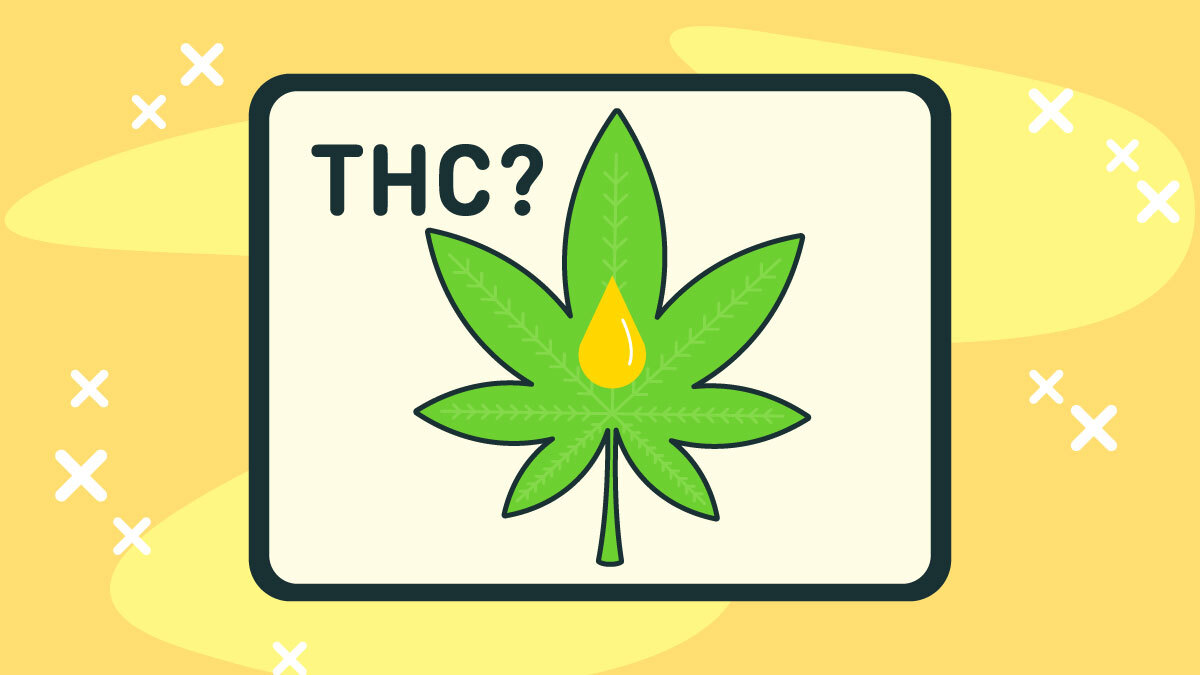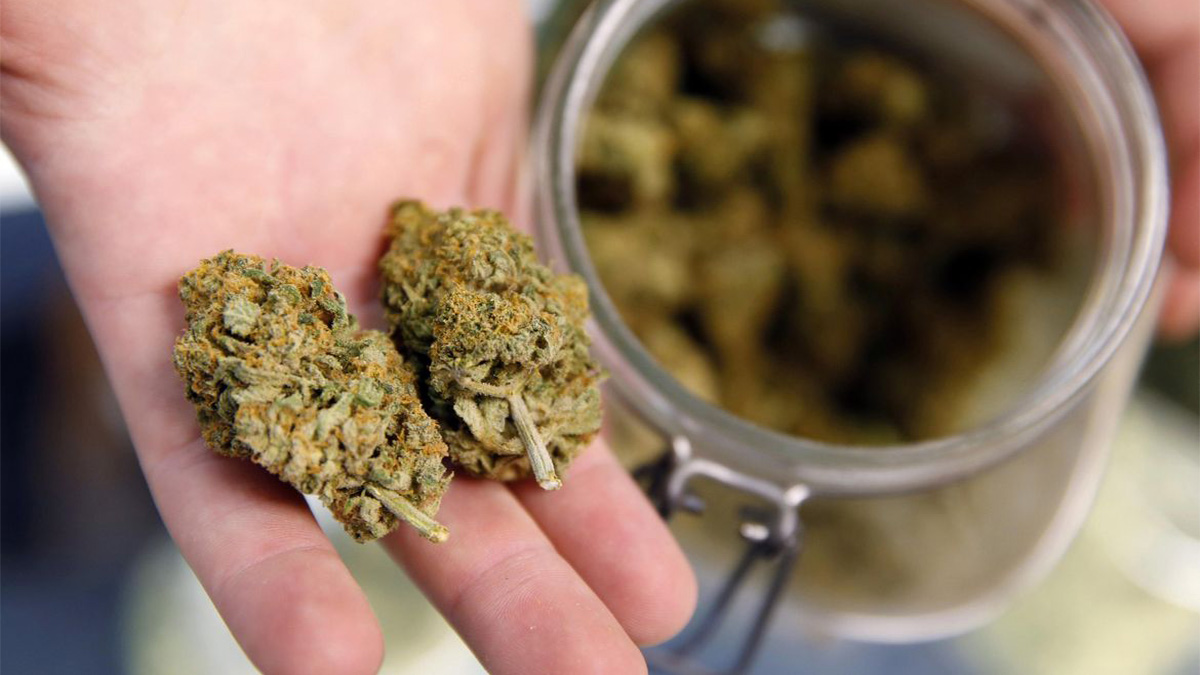How Much THC Is In Weed?

A RollingPapers.com reader walks into a bar and orders a drink.
Here’s the question. How much alcohol is he going to be consuming?
Obviously, that’s a question that can’t be answered until you know what type of drink it is. Bacardi 151 is 75% alcohol. Straight whiskey contains 40-43% alcohol and red wine averages around 13% alcohol content. Beer averages about 5%, but O’Doul’s only contains 0.4% alcohol.
There’s no “right” answer to the question of how much alcohol is in an alcoholic drink – just as there’s no “right” answer to “how much THC is in weed?”
The most important consideration is the type of marijuana. Strains like Godfather OG may have THC content that’s higher than 30%. On the other hand, a strain like Harle-Tsu that’s bred to have high CBD content and is primarily used by pain patients contains only about 1% THC.
Other factors matter, too. Those are just averages, and the way the pot has been grown can greatly affect its THC content. The way you consume your weed makes a big difference, too.
So we can’t tell you exactly how much THC is in weed. What we can tell you, though, are the variables that determine the amount of THC that’s in that dime or ounce you get from a dealer or dispensary.
Cannabis and THC
First, a quick refresher. THC, the way we all refer to tetrahydrocannabinol (or delta-9 THC), is the psychoactive component found in the marijuana plant.
Many people believe that the higher the THC level, the higher you’ll get. That’s not quite accurate, but it’s close enough to the truth that smokers often seek out the “highest-THC” weed they can find.
What else affects the potency of your bud? For starters, optimum growing conditions. Producers who pay close attention to light, temperature, and humidity will be able to grow better plants – and optimize those plants’ THC content. The way you put cannabis into your body also has a major effect on how much will end up hitting your endocannabinoid receptors.
Smoking a joint is slightly more effective than smoking a bowl, a vaporizer’s lower temperatures vastly increase the amount of THC you’ll get, and dabbing concentrate is a vastly-superior delivery method (but potentially dangerous). Edibles can make you higher than smoking, but that’s because the body metabolizes the THC in them differently. The consumption method doesn’t mean there’s more or less THC in the flower, it just determines whether you’ll end up reaping more or less of the benefit.
And there’s a lot more in weed than just THC. Other cannabinoids, terpenes, and flavonoids all work together in what’s called the “entourage effect” to enhance or reduce the effectiveness of the psychoactive cannabinoid. In some strains, they make a major difference – meaning that THC content doesn’t necessarily reflect how high you’ll get.
Here’s the problem, though. The only easily-understandable “number” that sellers can promote is the amount of THC in their weed. So consumers demand high-THC strains, and growers focus on developing and producing them. As a result, the average THC content in cannabis continues to increase.
In fact, it’s increased a lot over the last few decades.
The Average Amount Of THC In Weed

The average THC content in cannabis doesn’t really tell you much when you’re about to purchase the bud you’re going to enjoy over the weekend. That number has nothing to do with whether you buy some GSC or some Bubba Kush, and whether you buy primo product or schwag.
What’s interesting, though, is how the THC in weed measures up against numbers from the past.
The Potency Monitoring Program (operated by the National Institute on Drug Abuse) has done extensive work since 1972, analyzing marijuana samples provided by law enforcement agencies that have seized stashes around the country. The Natural Center for Natural Products Research (NCNPR) at the University of Mississippi does much the same thing. Their statistics aren’t definitive, of course, since they can only measure the cannabis submitted to them for measurement, which may have substantially degraded by the time it was tested.
The numbers from the 1970s and 80s don’t mean much, because most of the pot back then was imported from other countries, much of it loaded with stems and seeds. Even so, the numbers show that today’s product is, on average, as much as 67% more potent than the stuff your parents or grandparents were smoking.
What’s much more telling is comparing the THC in weed in the 1990s with what you can buy today. In 1995, the average THC content was tested at about 4%. That number is now well over 10%, and the NCNPR projects the average will hit 15-16% in the next few years.
Since most vendors focus on selling a high-THC product, the chances are good that whatever strain you purchase will have THC levels well into the teens or the 20%+ range.
Want to maximize the amount of THC in your smokables? There are a number of strains to look for.
Strains With High THC Content
There are some weed strains with THC content close to (or over) 30% which aren’t available in most areas of the country. They include Brownie Scout, bred and sold in Illinois, and Future #1, only found in the Pacific Northwest. We’re focusing here on a few strains that are available in much larger geographical areas.
- Godfather OG: This Cannabis Cup winner once tested at 34% THC, but the stuff you’ll find in dispensaries will more likely be in the high 20% range. That’s still nothing to sneeze at. It’s an indica-dominant strain that provides both a euphoric head high and severe body lock.
- Garlic Cookies: Even though this one is 90% indica, it still delivers a cerebral high while not locking you to the couch. The THC level is right around 30%, and it’s a favorite for medical patients.
- Bruce Banner: With a THC content that can range as high as 29%, this sativa-dominant hybrid provides an energetic and creative head high that’s likely to keep you going for a while without being knocked out. It’s really more Incredible Hulk than Bruce Banner, to be honest.
There are many more, of course, but remember: it’s not only THC that delivers a mind-blowing experience. The quality of the bud, its other components, and the way you consume it will all make a big difference in whether you wind up being impressed or disappointed in the strain’s THC content.
How Much THC Is In Weed? FAQ
Q: Is a strain with 25-30% THC “too much” for occasional smokers?
A: It could be, but again, not all high-THC strains are created equal. Newbies or social smokers may want to go easy if they’ll be sampling weed with a ton of THC until they can gauge their tolerance levels.
Q: You mentioned that dabbing provides the most potency. Does it really make that much of a difference?
A: Absolutely. The website WayOfLeaf tried to measure the difference between the THC delivered by smoking and dabbing, and they estimated that smoking delivered around 20% of the THC content. For dabbing, it was 70%. A warning, though: dabbing isn’t something you should try unless you know what you’re doing. If you’re interested, do it with an experienced friend first.
Q: How can producers deliberately increase the amount of THC in their products?
A: The most important factor is the type of plants they grow. A number of strains have been cross-bred to maximize THC content, and growers are more likely to heavily lean toward including those plants in their crops. They also optimize growing conditions and use hydroponic methods to boost the plants’ productivity, and harvest the potent sinsemilla to be used in the weed they sell.